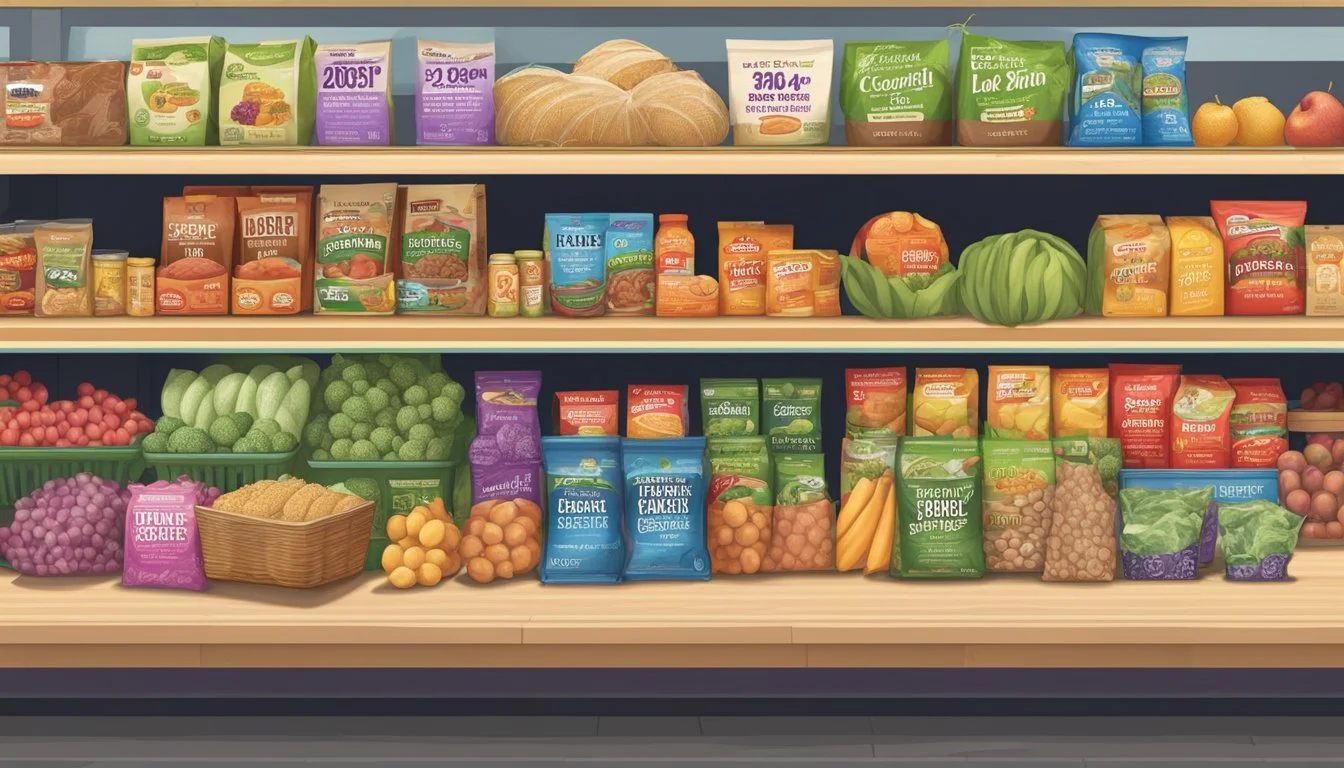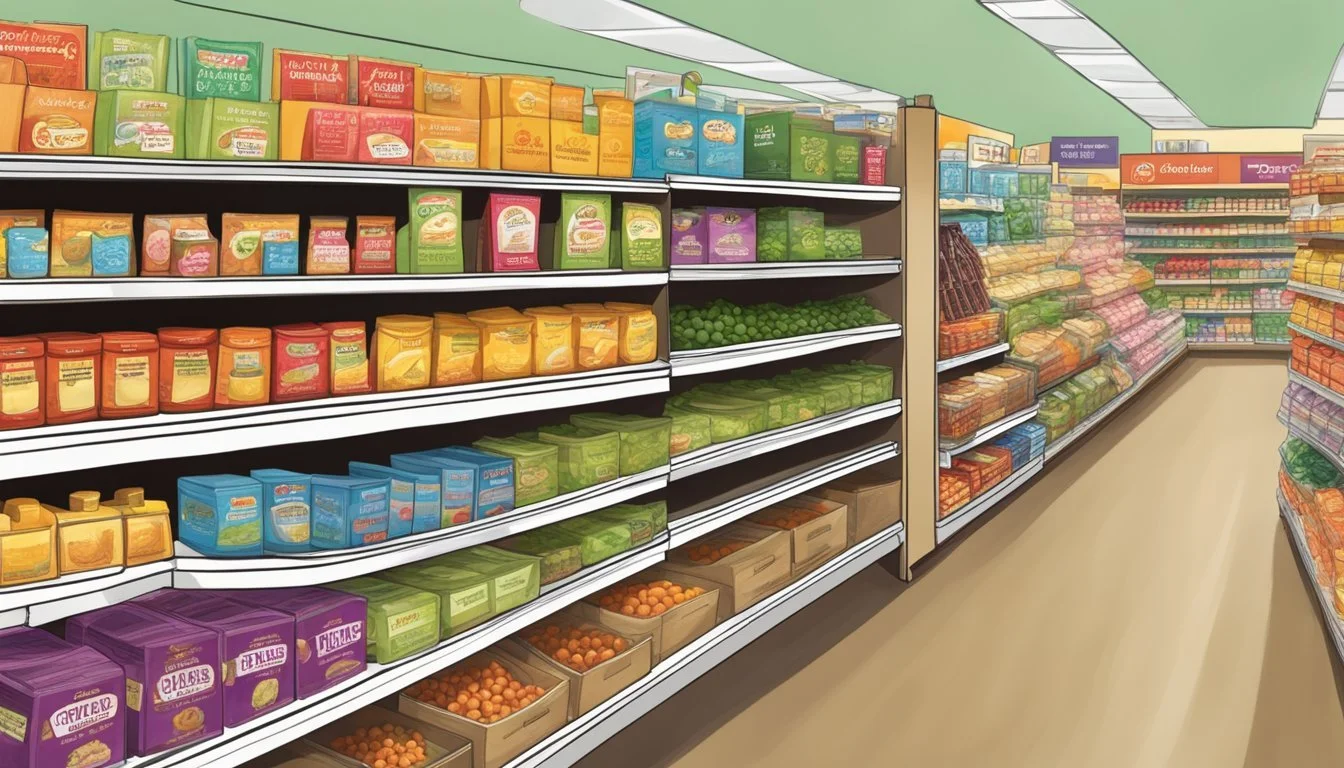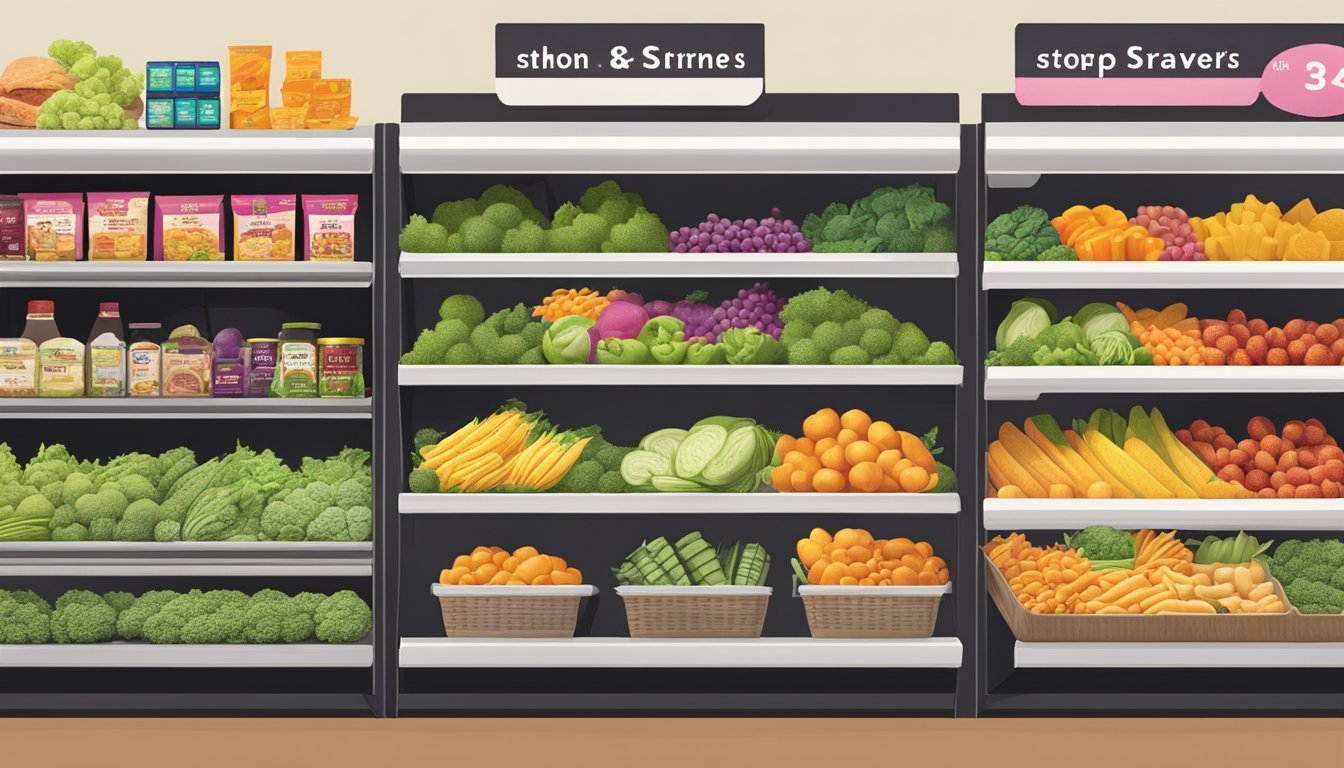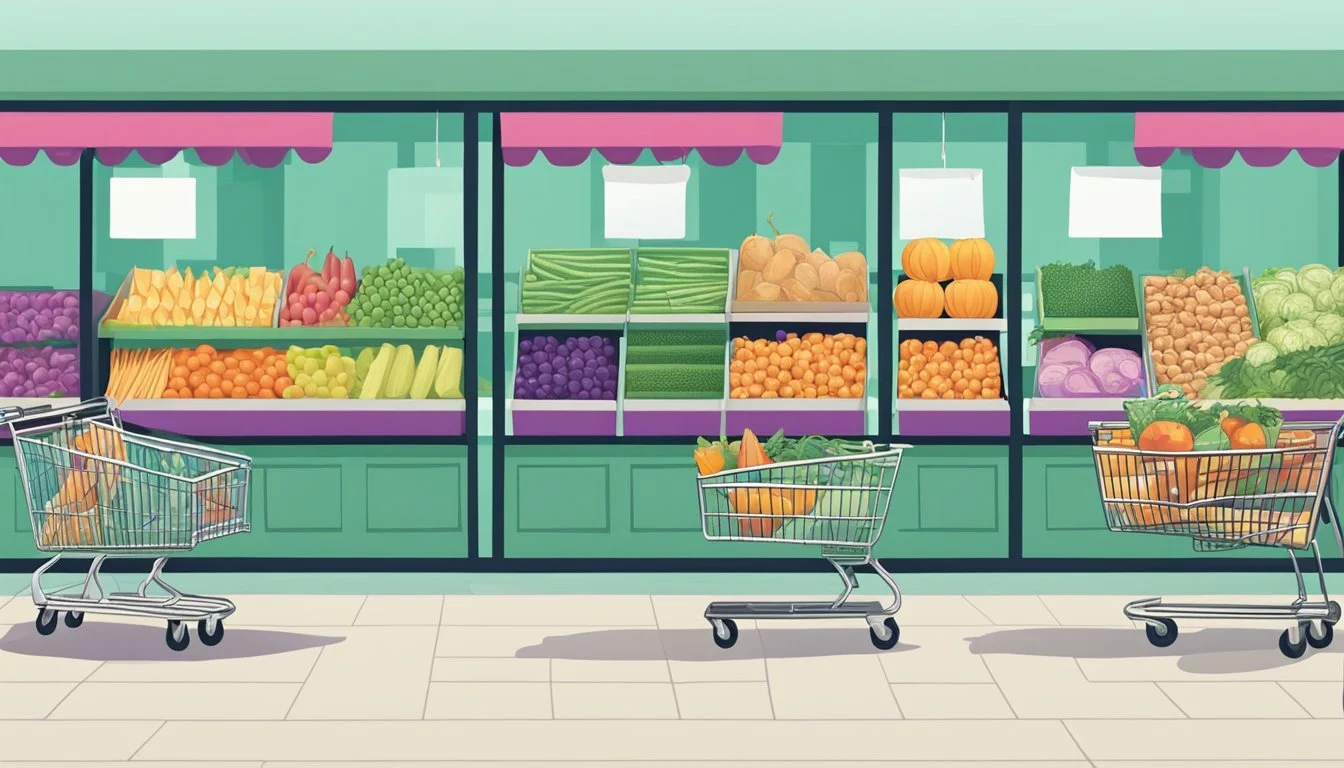Is Trader Joe's Cheaper Than Stop & Shop?
Analyzing Grocery Pricing
Part of Our Grocery Store Guide with Details on Trader Joe's Prices and Wegmans Prices
When it comes to grocery shopping, price is a major deciding factor for many consumers. A comparison between the prices at Trader Joe's, a popular national grocery chain, and Stop & Shop, a well-regarded northeastern regional chain, reveals that Trader Joe's tends to be less expensive for a variety of basic grocery items. This price difference is consistent across multiple categories, including produce, where a side-by-side comparison shows Trader Joe's offering lower prices than Stop & Shop.
Analyses of shopping carts filled with store-brand staples from both stores provide insight into the overall value offered by each. For example, pricing analysis for nearly 50 essential items at both Trader Joe's and Stop & Shop demonstrates that the former has a price advantage. This information is useful for budget-conscious shoppers trying to decide which retailer will give them the most for their money without compromising on quality.
In the landscape of grocery retailers, Trader Joe's has cultivated a reputation for its combination of quality goods and responsible pricing. By keeping costs competitive, this grocery chain has positioned itself as an affordable option for consumers looking to balance their food budgets without sacrificing the quality of their purchases. This comparison with Stop & Shop underscores Trader Joe's commitment to affordability and enriches the consumer's understanding of the grocery market dynamics.
Comparing Trader Joe's and Stop & Shop
In order to determine which retailer offers better value for shoppers, a comparison of Trader Joe's and Stop & Shop has been conducted, focusing on a variety of common grocery items.
Overview of Trader Joe's
Trader Joe's is a national chain known for its private-label brands and emphasis on affordable prices. The store prides itself on cutting out the middleman and working directly with suppliers, allowing it to offer a range of groceries including organic and specialty products at competitive prices. A particularly remarkable finding is their pricing on basic grocery items such as bananas, priced at $0.19 each, and private-label staples like pasta and cereal, which often undercut national brand prices.
Overview of Stop & Shop
As a regional chain with a broad presence on the East Coast, Stop & Shop offers a wide variety of groceries from popular national brands to its own store brand. The retailer provides a mix of conventional and organic products, although it is typically noted for higher prices on certain items when compared to Trader Joe's. For example, individual bananas at Stop & Shop are reported to be $0.41 each, and private-label groceries generally tend to be more expensive here than at Trader Joe's.
Item Trader Joe's Price Stop & Shop Price Banana (each) $0.19 $0.41 Spaghetti (1 lb) $1.09* $1.29* Organic 2% Milk $3.49* $3.99* Eggs (dozen) $2.69* $2.99* Cereal (box) $1.99* $3.53*
*Prices are approximate and can vary by location and over time.
By comparing prices across several basic grocery items, it becomes evident that Trader Joe's often provides more budget-friendly options, while Stop & Shop tends to feature a broader selection, including brand names not commonly found at Trader Joe's.
Price Comparison Metrics
When comparing Trader Joe's to Stop & Shop, several metrics need to be considered to determine which store generally offers lower prices. Evaluating average basket cost, discounts and sales, and how quality and brand selection impact prices provides a comprehensive understanding of the value each retailer offers.
Average Basket Cost
The average basket cost is a vital metric in price comparison, representing the total price of a selection of goods typically purchased in a single shopping trip. A CNET analysis compared the cost of 48 similar items at both stores, with Trader Joe's total ringing up at $150.32 and Stop & Shop's at a higher sum, indicating that Trader Joe's generally has a lower average basket cost for basic staples.
Discounts and Sales
Discounts and sales can significantly affect the final price paid by shoppers. Trader Joe's is known for its everyday low prices, which often means fewer advertised sales or coupons. In contrast, Stop & Shop may provide weekly specials and offer a loyalty card for additional discounts. Shoppers should consider the frequency and extent of discounts and sales when assessing which store is less expensive overall.
Quality and Brand Impact on Prices
Quality perception and the brands available at each retailer influence the prices of items. Trader Joe's primarily sells its store brand, which helps keep prices low, while offering a selection considered to be of high quality by consumers. Stop & Shop's prices include a mix of its own brands and national brands, which can sometimes be more expensive. Consequently, the value attributed to quality and brand loyalty plays a role in determining which store offers better deals.
Product Category Analysis
This analysis compares prices and value offered by Trader Joe's and Stop & Shop across various product categories. The focus is on how these two stores distinguish themselves in terms of cost for fresh produce, dairy products, pantry staples, and meat and poultry.
Fresh Produce
At Trader Joe's, customers can often find bananas at more competitive prices compared to Stop & Shop. For instance, bananas are a notable example where the cost savings are evident. The trend of competitiveness extends to other produce items as well, including organic options, where Trader Joe's generally maintains a lower price point.
Dairy Products
In the dairy section, Trader Joe's offers items like milk and cream cheese at lower costs. Specific comparisons have highlighted that both conventional and organic milk are cheaper at Trader Joe's. Eggs, including brown eggs, are also found to be less expensive, making Trader Joe's the go-to for many dairy essentials.
Pantry Staples
When it comes to pantry staples like peanut butter, Trader Joe's creamy salted peanut butter is priced affordably without sacrificing quality. Additionally, staple brands such as Barilla pasta tend to be more economical at Trader Joe's, as are essential items like bread and maple syrup.
Meat and Poultry
For those looking to purchase meats, Trader Joe's often has better prices on items such as all-natural whole chicken. The price difference is significant enough to make Trader Joe's a preferred choice for consumers focused on both cost and quality when buying meat and poultry products.
Consumer Experience
Shoppers prioritize both cost savings and quality consumer experiences when selecting a grocery store. Trader Joe's and Stop & Shop vary significantly in their approach to enhancing the customer's in-store journey, with distinct differences in store layout, accessibility, and customer service.
Store Layout and Accessibility
Trader Joe's is renowned for its unique nautical theme which provides a distinctive and easily navigable store layout. Shoppers often find that the store's size is more compact compared to Stop & Shop, which can make for a quicker shopping experience. The layout is intentionally straightforward, leading customers through a winding path that exposes them to a variety of store brand items.
Packaging: Trader Joe's packaging is an essential part of their brand identity, often colorful and attractive, sometimes providing a whimsical feel.
Store Brands: Customers experience a sense of discovery, with Trader Joe's store brands often positioned as high-quality alternatives to national brands.
Stop & Shop, on the other hand, presents a more traditional supermarket layout. The larger store size can offer a wider assortment but might require more time to navigate.
Accessibility: Aisles are clearly marked, with an emphasis on separating different food categories for efficiency.
Customer Service
Trader Joe's staff are known for their friendly and informative customer service. Employees, or "crew members," are encouraged to engage with customers, providing not just assistance, but also sharing knowledge on products and offering samples.
Samples: The opportunity to try products through free samples is a bonus for customers, enhancing the shopping experience and potentially influencing purchase decisions.
Stop & Shop takes a more conventional approach to customer service, with employees offering assistance upon request. The focus is on efficient transactions and providing assistance when needed, rather than the proactive engagement found at Trader Joe's.
Both grocery stores train their employees to be helpful and polite, ensuring customer inquiries are addressed and that they leave with a positive impression of the shopping experience.
Additional Cost Factors
When comparing the cost of items between Trader Joe's and Stop & Shop, consumers should consider the pricing of organic and specialty items, as well as volume and package size, which can influence the overall savings on a grocery budget.
Organic and Specialty Item Pricing
Trader Joe's is often recognized for its competitive pricing on organic items. For example, organic low-sodium chicken broth is priced at $1.99 at Trader Joe's, while the same product costs $3.19 at Stop & Shop. This difference highlights the potential savings for consumers seeking organic products. Similarly, specialty items like coconut oil may also be found at more attractive price points at Trader Joe's.
Organic Low-Sodium Chicken Broth
Trader Joe's: $1.99
Stop & Shop: $3.19
Coconut Oil
Pricing may vary, often cheaper at Trader Joe's
Volume and Package Size
The volume and package size of products can significantly affect the cost per unit. Trader Joe’s typically sells products in smaller, more consistent packaging, which can help consumers manage their budgets without committing to bulk purchases. Classic items, such as classic potato chips or half and half, can differ in volume or package size between retailers, therefore affecting the total cost and the potential for savings.
Classic Potato Chips
Size comparisons are necessary for accurate cost evaluation.
Half and Half
Careful consideration of volume is advised to ensure best value.
Consumer Savings Strategies
When shopping at Trader Joe's or Stop & Shop, consumers can employ a variety of strategies to maximize savings. Careful use of loyalty programs, membership discounts, and coupons can significantly reduce the total cost of a grocery list.
Loyalty Programs and Membership Discounts
Trader Joe's does not offer a loyalty program, but shoppers at Stop & Shop can benefit from the Stop & Shop Card. This card offers exclusive discounts on certain items and can lead to significant savings over time. Moreover, members might receive personalized deals based on their shopping history, enhancing the value they get from each visit.
Effective Use of Coupons and Promotional Codes
Both Trader Joe's and Stop & Shop shoppers can take advantage of coupons and promotional codes. Stop & Shop consistently offers a collection of digital coupons via their website and mobile app. These can be applied directly to the shopper’s loyalty card and automatically redeemed at checkout. Trader Joe's, while not offering traditional store coupons, is known for its low everyday prices and occasional in-store deals. Shoppers should pay attention to weekly ads and plan their grocery list around the sale items to maximize potential savings.
Market Position and Brand Strategy
Trader Joe's and Stop & Shop have cemented their positions in the grocery market through distinctive brand strategies and marketing approaches. Their commitment to value and quality, as well as the use of private labels, have influenced consumer trust and market competition.
Brand Perception and Consumer Trust
Trader Joe's has established a reputation for offering high-quality products at affordable prices. Value is a cornerstone of its strategy, with a focus on private-label brands to provide exclusivity while keeping costs low. Consumers trust Trader Joe’s for its curated selection of goods that often cannot be found in other grocery stores. Stop & Shop also maintains consumer confidence but with a different approach, promoting itself as a convenient one-stop-shop with a wider range of national brands and household items alongside its store brand offerings.
Marketing and Competitive Positioning
In terms of marketing, Trader Joe's employs a low-key advertising strategy, relying heavily on word-of-mouth and its reputation among consumers for competitive positioning. Contrarily, Stop & Shop uses more traditional advertising methods to reach its audience. From CNET's comparison, Trader Joe's often has lower prices, suggesting that its strategy to compare prices actively with competitors like Stop & Shop is effective. The emphasis on private label products allows Trader Joe's to avoid direct comparisons with other stores, which may have a mixture of proprietary and national brands. Both stores aim to provide value, but Trader Joe's often does so with a unique selection, while Stop & Shop balances quality with the expectation of being less expensive than specialty grocers.
Summary and Recommendations
When considering the cost comparison between Trader Joe's and Stop & Shop, the focus is on delivering value and savings without compromising on quality. There is clear evidence that shows a price advantage at Trader Joe's in many basic grocery items.
Final Verdict on Value
Trader Joe's exhibits consistently lower prices on a wide array of products, topping the price comparison charts when matched against Stop & Shop. Customers can find that, on average, their budget can stretch further at Trader Joe's without sacrificing their shopping list. It's important to note that prices and value are subject to vary and depend on numerous factors including location and seasonality.
Shopping Tips for Saving Money
For those looking to optimize their grocery budget, here are some targeted tips:
Compare Staple Items: Basic staples often cost less at Trader Joe's, making it a smart choice for budget-conscious shoppers.
Check for Sales: Stop & Shop might offer competitive prices during sales, so keeping an eye on flyers could yield savings.
Bulk Buys: For larger families or storage capabilities, calculate the price per unit to see where you can save by purchasing in bulk.
Seasonal Products: Prices can be lower for produce that is in season, which can affect price assessments year-round.
Shoppers should use these tips to make informed decisions, as individual savings can vary based on personal shopping habits and local store prices.
References and Resources
For those interested in comparing the prices of Trader Joe's and Stop & Shop, a variety of resources and studies provide detailed insights. Here is a concise list of references that shed light on the price differences between these two grocery chains:
CNET's Price-Comparison Analysis: A comprehensive review comparing prices of 50 essential grocery items, highlighting that Trader Joe's prices were lower in almost every case, including produce.
Whole Foods, Trader Joe's, and Stop & Shop Price Comparison: This resource lists total expenditure on a set basket of goods across different stores, with Trader Joe's offering the lowest total cost.
Cost Comparison of Staples: An article that presents a cost comparison for 48 basic items, demonstrating Trader Joe's as the most affordable option for store brand staples compared to Stop & Shop.
Reddit Community Insights: Discussions among users provide anecdotal evidence and personal observations on pricing, with many users ranking Trader Joe's as the most economical option when compared to Stop & Shop and other competitors.
Organic and Conventional Price Comparison: Articles that compare prices of similar quality items, both organic and conventional, between Trader Joe's and other grocery stores, indicating the differences in affordability.
Note: Readers are encouraged to consult the original articles and discussion threads for deeper insights and up-to-date information on grocery pricing.








